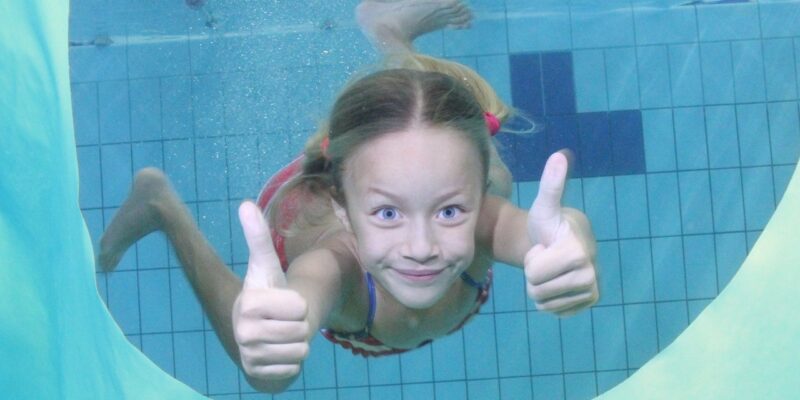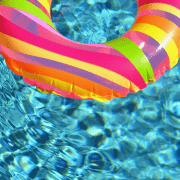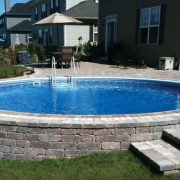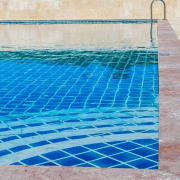Swimming pools bring joy and relaxation, but safety is paramount, especially for children. In this article, we explore essential pool safety devices, from alarms to automated covers, that are key to preventing accidents and ensuring peace of mind for families.
Understanding the Risks
When it comes to your child’s safety around pools, knowing the risks is crucial. Keeping informed helps prevent accidents and provides peace of mind.
Drowning Statistics
- Number of Incidents: Annually, roughly 800 children under the age of 14 die due to drowning, with a significant number of these tragedies occurring in residential pools.
- Age Group Most at Risk: Children aged 1-4 have the highest drowning rates, often in home swimming pools.
- Supervision Factors: Most drowning incidents happen when children are left unattended or during a short lapse in supervision.
Common Pool Hazards
- Inadequate Fencing: An unsecured pool is a hazard. Fences less than 4 feet tall are often insufficient to prevent access by small children.
- Pool Covers: Not all pool covers are created equal. Some lightweight covers can pose a risk if a child falls on them and becomes trapped.
- Open Gates: Gates that are left open, even momentarily, provide an opportunity for children to enter the pool area unsupervised.
Best Pool Safety Devices
Incorporating the best pool safety devices is a critical step in childproofing your home swimming area. Key devices include various types of alarms, such as surface wave and subsurface detection systems, along with gate and door alarms that alert to unauthorized access
When childproofing your pool, integrating the best pool safety devices is essential. These devices enhance the safety of the pool area, especially for children, and can be life-saving in preventing accidents.</p>
Pool Fences and Gates
Your pool should be surrounded by a fence that’s at least 4-5 feet tall to prevent unsupervised access by children. Gates need to be self-closing and self-latching, with latches positioned out of children’s reach.
Pool Covers
Utilize pool covers that stretch across to cover the entire pool when not in use. These not only keep debris out of the water but also add a layer of protection to prevent accidental falls into the pool.
Alarms and Sensors
Install alarms on gates, doors, and windows that alert you if a child enters the pool area unsupervised. Water sensors and pressure sensors can also notify you if something or someone enters the water.
Remove Pool Toys When Not in Use
Ensure all pool toys and flotation devices are removed from the water after use. These can tempt children to enter the pool area unsupervised and potentially lead to hazards.
Invest in a Safety Cover for Drains
Pool drains can create dangerous suction effects. Cover your pool drains with safety covers to prevent a child’s hair or limbs from getting stuck.
Use Non-Slip Material Around the Pool
Choose a non-slip material for the pool deck to reduce the risk of slips and falls. This kind of material offers better grip even when wet, keeping the area around the pool safer.
Supervision and Behavior
Ensuring your child’s safety at the pool involves constant supervision, establishing clear rules, and promoting swimming skills. Your vigilant attention and proactive measures can significantly mitigate risks.
Adult Supervision Best Practices
Always be present: You or another responsible adult must actively watch children at all times when they are near water. This means eyes-on, distraction-free supervision, without the interference of smartphones or engaging conversations.
Stay within arm’s reach: Particularly for toddlers or children who aren’t strong swimmers, remain close enough to provide immediate assistance if needed.
Establishing Pool Rules
- No running: Firmly enforce a no running policy around the pool to prevent slips and falls.
- No diving in shallow water: Clearly mark the areas where diving is prohibited to avoid head and neck injuries.
- Use flotation devices wisely: While helpful, flotation devices are not a substitute for supervision or knowing how to swim.
Swimming Lessons and Water Familiarity
Enroll children in certified swimming lessons at an early age. These programs teach important water survival skills and help children become comfortable and respectful of the water’s power. Regular practice reinforces these skills and builds water confidence.
Emergency Preparedness
When it comes to emergency preparedness around your childproof pool, it’s essential to focus on effective response strategies. You should be trained in life-saving techniques, have ready access to emergency contacts, and maintain the necessary equipment to handle poolside accidents.
CPR Training for Parents
CPR (Cardiopulmonary Resuscitation) is a critical skill that can save lives in the event of drowning. As a parent, obtaining CPR certification through an accredited program provides the confidence to react swiftly and effectively in emergencies. You can find CPR training opportunities at your local community center, hospital, or through organizations like the American Red Cross.
Emergency Contact Information
Keep a list of emergency contact information in a visible and accessible location. This should include:
- Local emergency services: 911
- Nearest hospital: Name and phone number
- Family doctor: Name and phone number
- Poison Control Center: 1-800-222-1222
Having this information readily available can significantly reduce response times during critical situations.
Rescue Equipment and First Aid Kits
Ensure your pool area is equipped with rescue equipment, such as a life ring or reaching pole. Moreover, maintain a well-stocked first aid kit that includes items such as bandages, antiseptic wipes, and a breathing barrier for performing safe CPR. Regularly check these supplies to ensure they are in good condition and replace any used or expired items promptly.
Pool Maintenance and Hygiene
Maintaining a clean and safe pool environment is essential for the health of all swimmers. Focus on establishing routines and handling chemicals with care to ensure a hygienic swimming experience.
Regular Cleaning Routines
Daily: Skim the pool’s surface and check for debris at the bottom. Balance your pool’s pH levels between 7.2 and 7.8 to prevent bacteria growth and protect swimmers’ skin and eyes.
Weekly: Vacuum the pool floor and scrub walls to prevent algae buildup. Clean out the pool’s filters to ensure efficient operation and clear water.
Chemical Safety
When using sanitizers like chlorine or bromine, make sure the concentration is within recommended levels, typically 1-3 parts per million for chlorine. High chemical levels can cause eye and skin irritation, while low levels may not effectively kill germs.
Store chemicals in a cool, dry place, away from direct sunlight to prevent degradation. Always follow the manufacturer’s instructions for the safe use and storage of pool chemicals.
Controlling Access to Pool Chemicals
Keep pool chemicals out of reach of children and pets to prevent accidental ingestion or skin contact. Utilize locked storage cabinets or containers specifically designed for chemical storage. This reduces the risk of accidents and ensures chemicals remain in their proper state.
Legislation and Compliance
When childproofing your pool, understanding and adhering to the legislation and compliance requirements are crucial for the safety of your children and to avoid legal penalties. These regulations can vary significantly by location, so it’s imperative to be aware of the specifics that apply to your area.
Local Safety Regulations
Local safety regulations are the specific rules and standards that your pool must meet to be considered safe and compliant. These are legally binding and are often determined by state or municipal governments.
For example, regulations may stipulate the required height and type of fencing around the pool, the necessity for pool covers, or the installation of alarms and anti-entrapment devices.
- Pool Fencing: Fences are mandatory in many areas and usually must be at least 4 feet high with self-closing and self-latching gates. Check with local guidelines, as some may require different heights or materials.
- Pool Covers: Some locales require pool covers that can support the weight of a child and are designed to prevent accidental immersion.
- Alarms: Certain jurisdictions mandate the use of pool alarms that sound when someone enters the water.
- Drain Covers: Federal law, through the Virginia Graeme Baker Pool & Spa Safety Act, requires anti-entrapment drain covers and other safety devices for public pools and spas, and these may also apply to residential pools in your area.
Ensuring your pool meets all local safety regulations not only maximizes safety but also ensures you meet your legal obligations. To find out more about the laws in your area, visit municipal websites or contact local building authorities.
For a comprehensive understanding of guidelines that can help prevent most submersion incidents involving young children, the U.S. Consumer Product Safety Commission (CPSC) provides a detailed booklet.
In conclusion, equipping your pool with the right safety devices is a crucial step in ensuring a safe and enjoyable environment for your family.
From sophisticated alarms to secure covers and barriers, these tools play a vital role in preventing accidents and providing peace of mind. Remember, while these devices add layers of protection, they should always be complemented with vigilant supervision and adherence to safety practices around the pool.














Comments